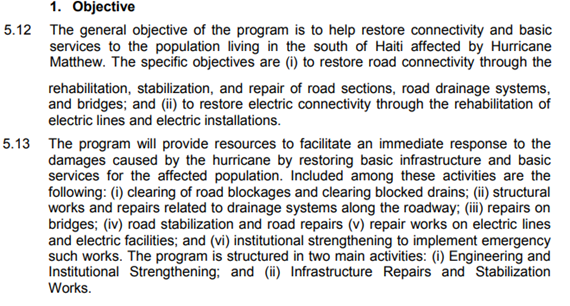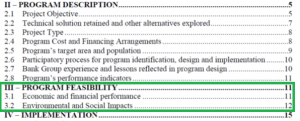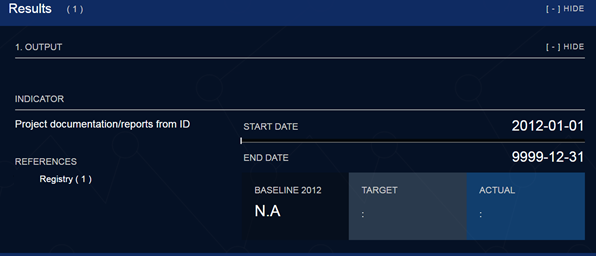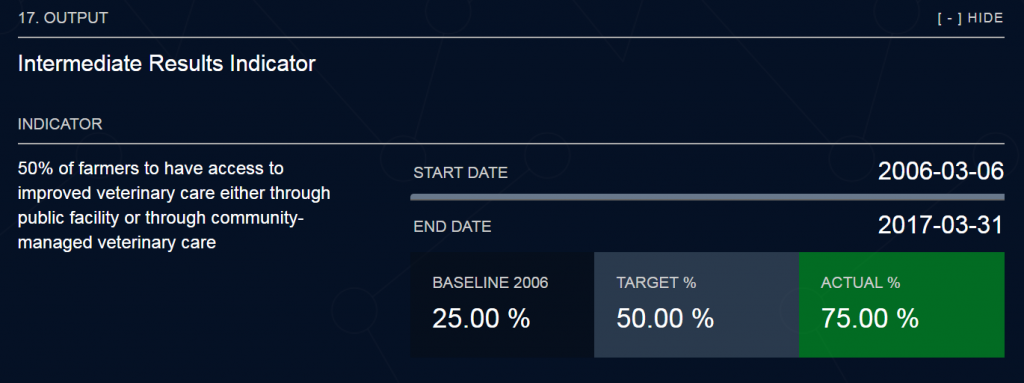Publishing Practices – Improving the Publication of Performance-Related Indicators
As we have outlined in the first blog post of the series on publishing practices, getting the basics right is essential to improve both the user-friendliness and the usefulness of IATI data, removing barriers to data use, including by non-experts.
Aid transparency is more than just putting user-friendly data out there. What really matters is that the information published is of high quality and therefore useful to support decision-making processes and to hold governments accountable.
One area where this is particularly important is project performance-related information. Performance data and documents are essential for monitoring the progress of projects as well as for assessing whether a project is on track or has achieved its development objectives. However, our 2018 Aid Transparency Index revealed that performance-related information shows the most severe gaps and improving the publication of these pieces of information is one of our key recommendations.
That is why the second blog of our two-part series on publishing practices focuses on project performance indicators. As with the publication practices on basics, we went back to all the data and documents we sampled and verified during data collection, hand-picking examples of various publishing practices.
1. Objectives
What do we expect?
The objectives or purposes of the activity are those that the activity intends to achieve.
The objectives should include a detailed description of the activity, the target sector/group and the expected outcomes.
IATI provides two ways to publish objectives – either inline using a description of type 2, or a document-link with code A02 (“Objectives / Purpose of activity”).
What should it look like?

The objectives meet the definition, describing the activity, naming the target groups as well as the expected outcomes. The objectives are detailed, differentiating between general and specific objectives.
2. Pre-project impact appraisals
What do we expect?
Pre-project impact appraisals explain the totality of positive and negative, primary and secondary effects expected to be produced by a development intervention.
This can also be captured by environmental impact assessments as well as impact assessments that explain what objectives the project itself intends to provide.
In IATI, pre- and post-project impact appraisals are reported using a document-link with code A01.
What should it look like?
 The document was drafted before the project started. It provides details on the feasibility of the project, also outlining potential environmental and social impacts. Social and environmental impact assessments can also be published as a separate document and do not have to be embedded in an overarching appraisal document.
The document was drafted before the project started. It provides details on the feasibility of the project, also outlining potential environmental and social impacts. Social and environmental impact assessments can also be published as a separate document and do not have to be embedded in an overarching appraisal document.
3. Results data
What do we expect?
The results show whether activities achieved their intended outputs in accordance with the stated goals or plans. This information often refers to log frames and results chains (…).
The IATI Standard offers the possibility to report different result types. For details on how to use the IATI results framework, refer to the reference documentation.
What should it not look like?

What should it look like?
Example 1

Example 2

Both examples specify indicators. Available data includes quantifiable targets and actual outcomes, allowing a data user to see whether intended outputs have been achieved.
BUT…
Unfortunately, the publishing practices for results data come with a big but.
The first example aggregates the results over an eleven-year period, making it impossible for a data user to understand when progress happened and when the target was met. The IATI results framework makes it easy to publish interim results by giving the option to report results for self-defined timeframes (‘result period’).
The second example displays the results for a specific year but misses a baseline. This means that a data user cannot judge how ambitious the target was and what it means in the context of this activity.
Results information may be gleaned from linked results documents or other contextual information provided by the publisher on the activity, which we also capture in the Index. However, to the extent quantifiable information can be published as results data, this would improve its usability. In short, there is significant room for improvement on the publication of results and this applies to top as well as poor performers.
Aid cannot be truly transparent without performance-related information
If aid and development work is to deliver on its objectives and allocate budgets on that basis, current information on objectives, pre-project impact appraisals (including social and environmental assessments) and results should be made available and accessible to everyone. We encourage donors to first of all, make more performance-related information available but to also ensure that the pieces of information published are of high quality. Donors should take responsibility to promote the use of the data they publish in order to demonstrate the impact of transparency on development work. This starts by removing hurdles for data use such as incomplete results, missing appraisal documents or generic objectives.

